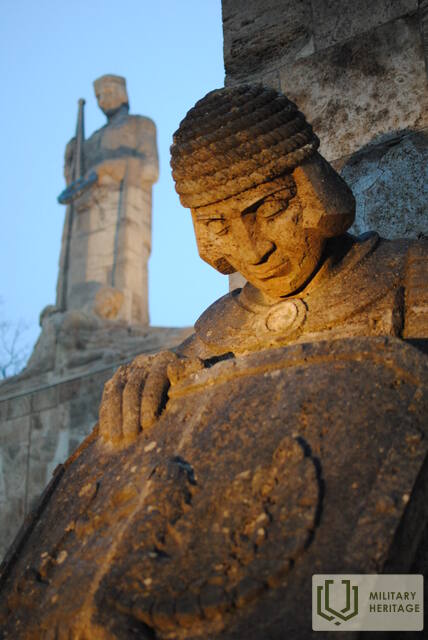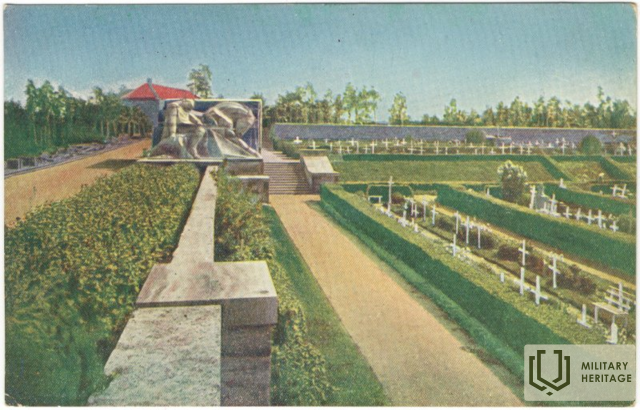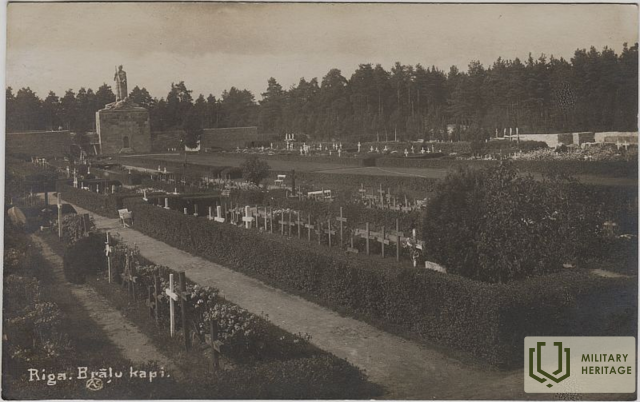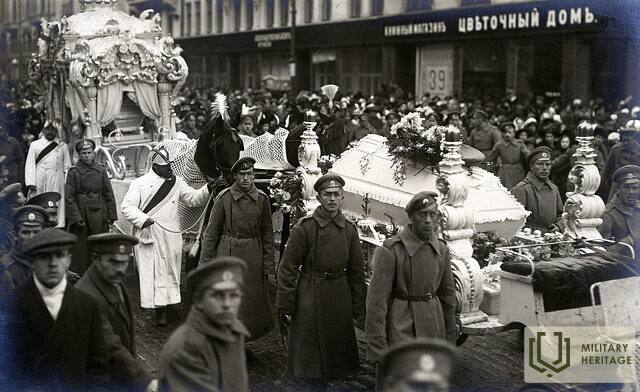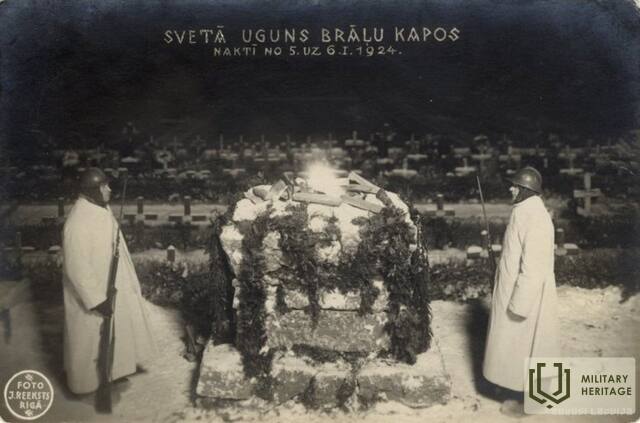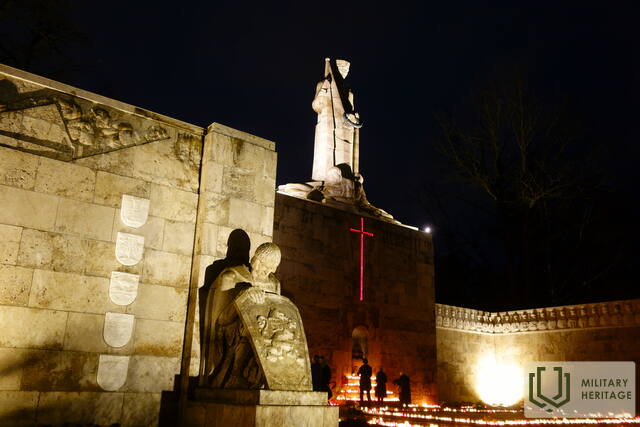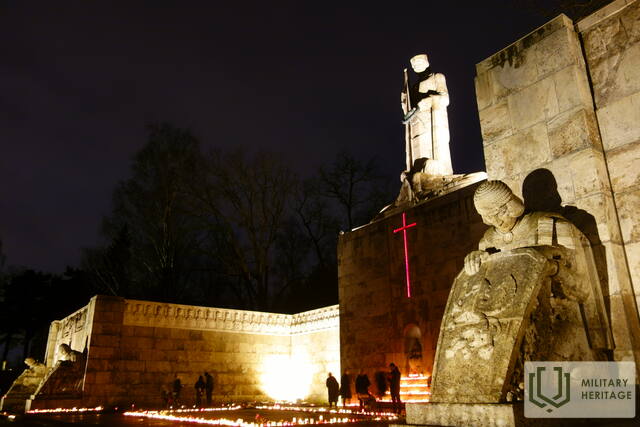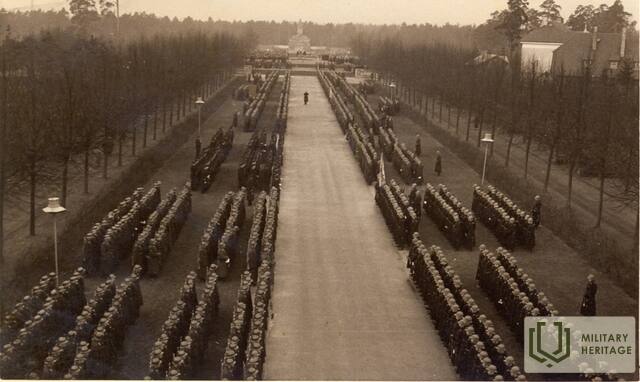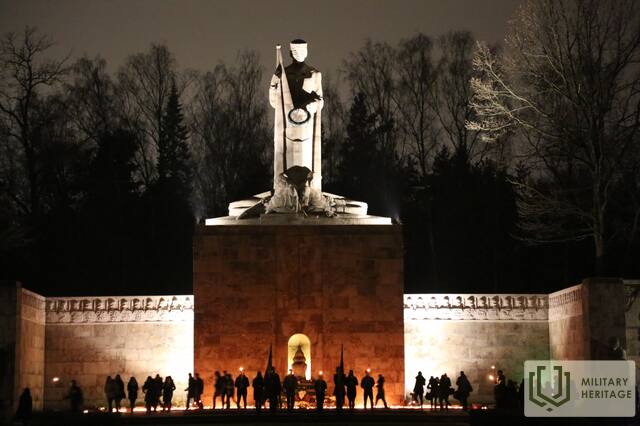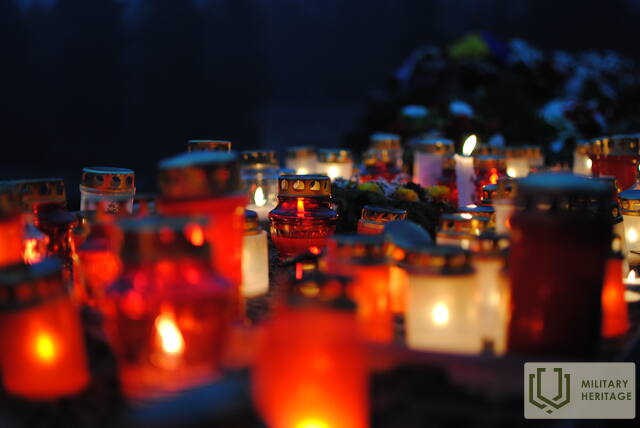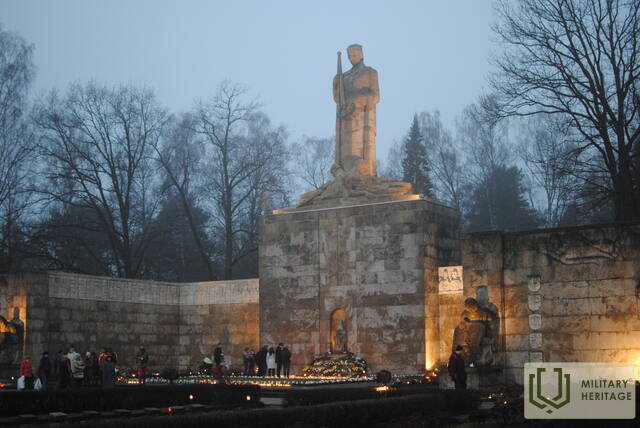Brolių kapinės Rygoje Memorialinė vieta

Rygos brolių kapinės yra šiauriniame Rygos rajone. Kapinės užima 9 ha plotą ir yra iškiliausias bei reikšmingiausias memorialinis ansamblis Latvijoje, skirtas žuvusiems Latvijos kariams. Čia palaidota apie 3000 karių. Brolių kapinės buvo įkurtos Pirmojo pasaulinio karo metu, palaidojus pirmuosius tris Latvijos šaulius, žuvusius Tyrelio purve mūšyje prieš vokiečių armiją. Vėliau Brolių kapinėse taip pat buvo palaidoti Latvijos kariai, žuvę kituose mūšiuose ir karuose. Memorialas sukurtas pagal skulptoriaus Kārlio Zālės projektą ir yra pirmasis memorialinis ansamblis Europoje, turintis tokią kraštovaizdžio, architektūros ir skulptūrinę vertę. Jame naudojami Latvijos kraštovaizdžiui būdingi elementai, tradicinės sodybos, Latvijos folkloras ir istorija, kurie giria karių savybes ir pasakoja apie kario kelią. Memorialas buvo atidengtas 1936 m. ir jį sudaro trys dalys: „Minties kelias“ – 250 m ilgio alėja, „Didvyrių terasa“ su Šventosios liepsnos aukuru ir Šventosios ąžuolyno ansambliu bei laidojimo vieta su Latvijos siena ir motinos su žuvusiais sūnumis memorialu.
Panaudoti šaltiniai ir literatūra:
Lismanis, J. Mūšių ir žuvusių kareivių atminimui: 1915–1920 m. Ryga: Nims, 1999.
Oficiali Rygos brolių kapinių svetainė. Prieiga per internetą: http://www.rigasbralukapi.lv/ievads/ [žiūrėta 2021-02-19].
Susijusi laiko juosta
Susijusios temos
Susijusi istorija
Apie pirmąjį Latvijos armijos vyriausiąjį vadą Dāvidą Sīmansoną
Knygos „Latvijos armijos vadai“ esė įtikina, kad istorijai didelę įtaką daro konkretūs asmenys. Nors svarbiausių istorinių įvykių epicentre jie buvo trumpą laiką, tikri Latvijos patriotai, turėdami didelę karinę patirtį, sugebėjo daug nuveikti formuojant ir stiprinant Latvijos kariuomenę bei istorinių įvykių lūžio taškuose.
Ši istorija yra apie pirmąjį Latvijos armijos vyriausiąjį vadą Dāvidą Sīmansoną (1859–1933).
Apie generolą Karlį Goppersą
Generolas K. Goppersas (1876–1941) buvo iškilus kareivis ir iškili asmenybė. Jis pasižymėjo kaip sėkmingas vadas, vadovavęs batalionams ir pulkams, didvyriškai vadovavęs savo šauliams kovose už Latvijos laisvę Pirmojo pasaulinio karo (1914–1919 m.) metu. Jis dalyvavo mūšiuose prie Tyreļpurvos, Ložmetējkalno ir ginant Rygą.
Taip gimė Rygos Brolių kapinės
Pasakotojas aprašo aplinkybes, kuriomis buvo sukurtas garsiausias Latvijos memorialas, skirtas žuvusiems kariams. Kaip matyti iš atsiminimų, nacionalinių didvyrių kapinės susidūrė su daugybe kliūčių ir nepalankiu – niekinančiu požiūriu ne tik iš bažnyčios, bet ir iš Rygos miesto valdžios pusės.
Karlio salė ir Laisvės paminklas
Pasakotojas aprašo Kārlio Zāleso, kaip asmenybės, sukūrusios garsiausius Latvijos meno kūrinius, prisiminimus. Aprašymas skirtas Zāleso atminimui 1942 m. (K. Zāleso mirties metais). Prisiminimai buvo pasirinkti taip, kad apibūdintų K. Zāleso kūrybą, remiantis autoriaus asmeninėmis savybėmis ir pasaulio suvokimu.
Apie mažiau žinomus latvių skulptoriaus Kārlio Zāles kūrinius senosiose Dīvalos ir Trikātos kapinėse
Vienas iš mažai žinomų skulptoriaus Kārlio Zālės (1888–1942) darbų yra travertino skulptūra „Nukritusios rožės“, sukurta 1939–1940 m. ir siejama su Brolių kapinių ansamblio sukūrimu.




